1945 Mercury Dime Coin Value: How Much Is It Worth?
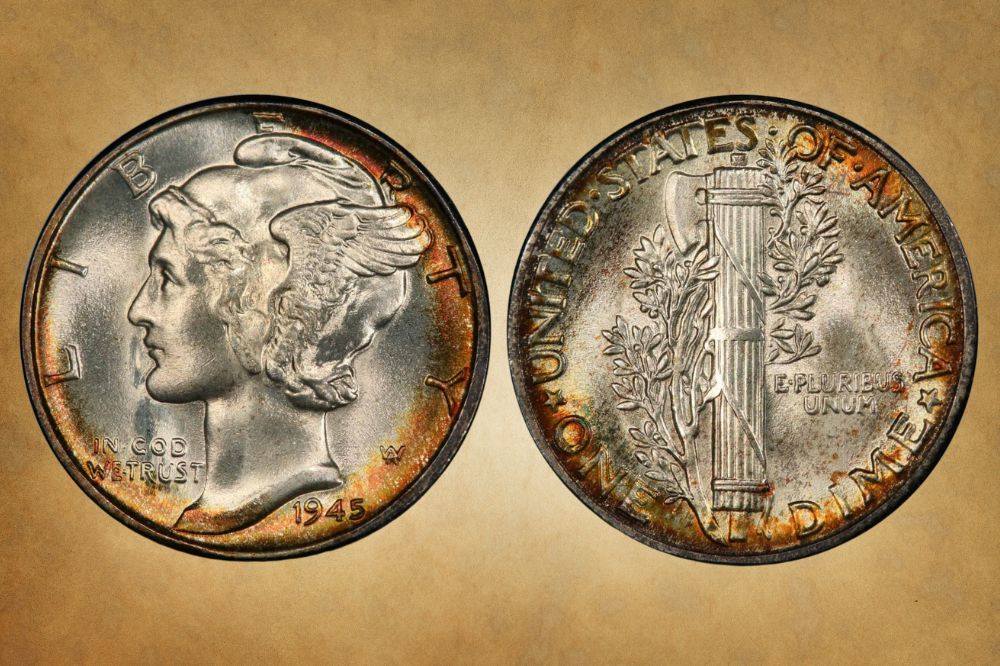
A funny thing happened with the Mercury Dime. Like the Lincoln Cent before it, some felt the artist’s initials were too prominent. Except this time, while the designer was willing to remove them, circumstances were in his favor, and he was allowed to retain credit! Let’s learn some more fun facts about this 10c coin as we appraise the 1945 Mercury Dime Value.
1945 Mercury Dime Value Chart |
|||||
| Mint Mark | Fine | Extremely Fine | About Uncirculated | Uncirculated | Mint State |
| 1945 (P) No Mint Mark Dime Value | $3.31 | $3.42 | $4.68 | $6.36 | $14 |
| 1945-D Dime Value | $3.31 | $3.42 | $4.68 | $6.36 | $35 |
| 1945-S Dime Value | $3.31 | $3.42 | $4.68 | $6.36 | $35 |
| 1945 Micro-S Dime Value | $3.57 | $6.36 | $18 | $35 | $113 |
1945 Mercury Dime Value Guide
Mint date, condition, and rarity are the three most important factors when you’re evaluating the price of a coin. And for Mercury Dimes, in particular, the clarity of the reverse has an extra grade called FB (by PCGS) or FSB (by NGC). It describes the fasces strings or ropes.
FB is Full Bands and FSB is Full Split Bands. They both define how clear the separation is between the bundle of twigs on the fasces. If you can readily count the stripes, that’s a Full Bands or Full Split Bands Dime. These designations only apply to business strike coins.
1945 (P) No Mint Mark Mercury Dime Value
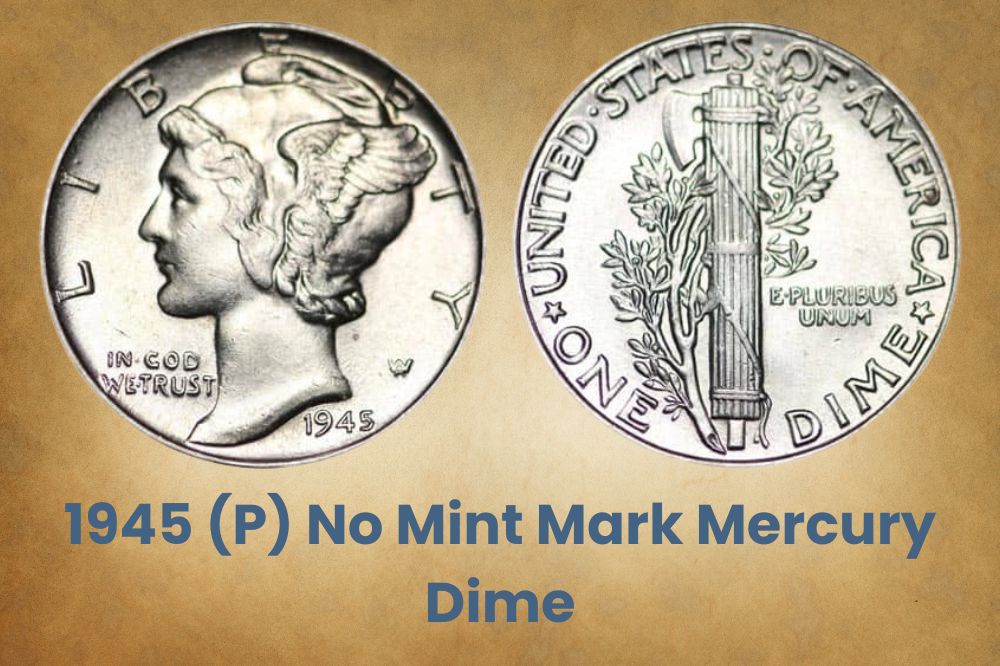
In 1945, the Philadelphia Mint made 159,130,000 Mercury Dimes without mint marks. In MS 66 FB, one of these coins sold for about $18,000. One-and-a-half steps higher, an MS 67+ FB CAC once sold for $96,000. Notably, PCGS coins seem to get better rates than NGC.
Also, CAC means Certified Acceptance Corporation and it’s an independent assessor. Prices depend on the sale date though, since a 2016 sample in MS 68 FB sold for far less in January 2016. By then, the rate was only $17,625. And in MS 65, the price went way down to $85.
1945-D Mercury Dime Value
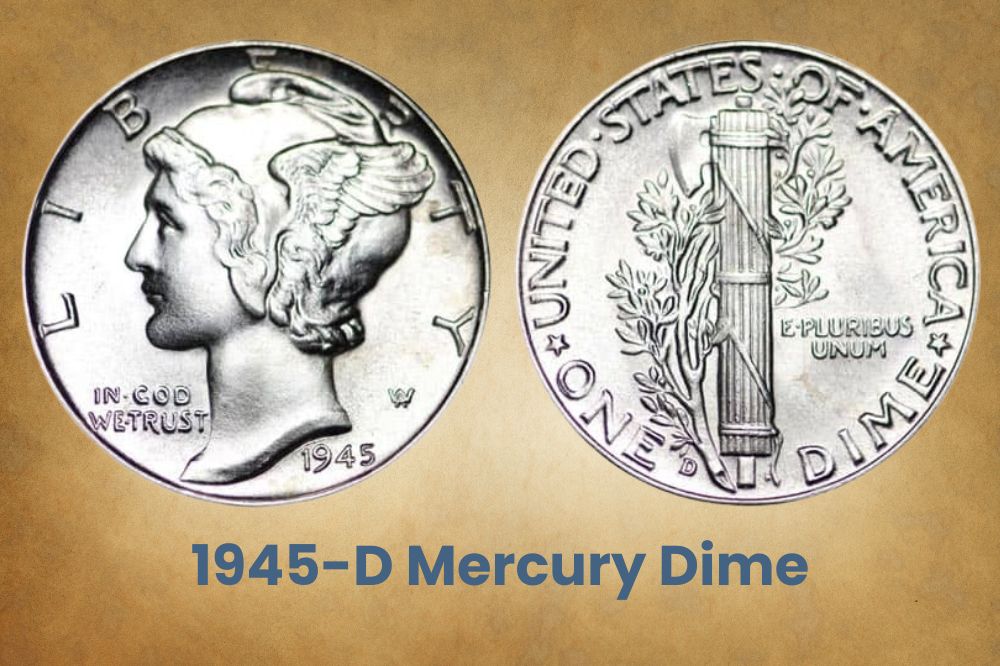
1945 saw 40,245,000 Mercury Dimes coined at the Denver Mint. So far, the best grade discovered was an MS 68 FB, and it sold for around $13,000. But the 1945-D has a lot of different RPMs, both vertical and horizontal. The ones with sideways Ds are worth more.
1945-S Mercury Dime Value
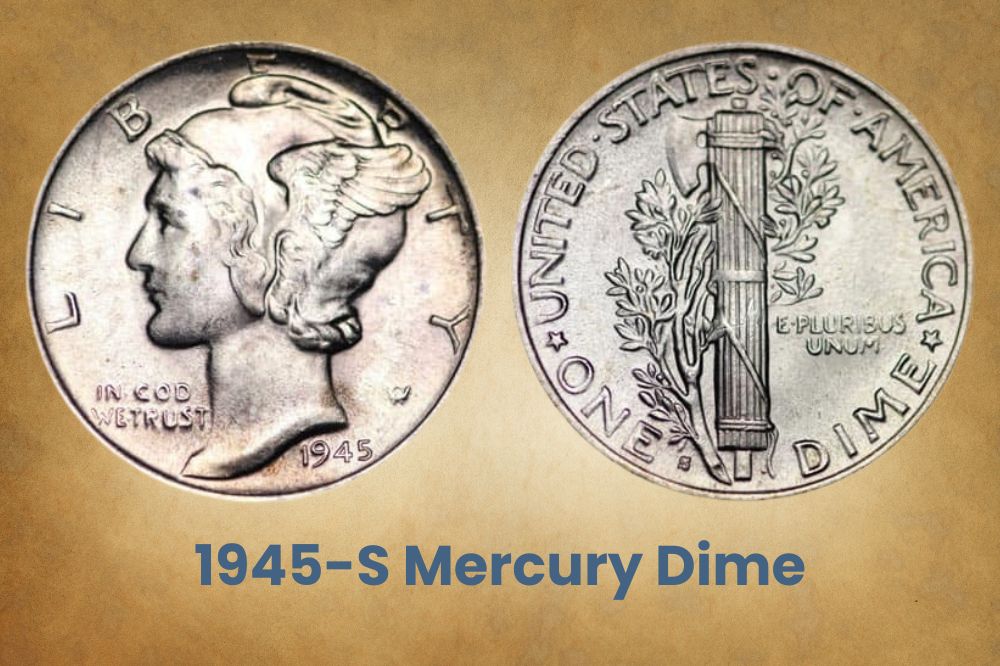
The San Francisco Mint made 41,920,000 Mercury Dimes with the S Mint Mark. In MS 68 FB, this coin is worth over $25,000 with the normal-sized mint mark. It’s unclear how many of them were Micro-S Mercury Dimes, but this visibly distinct was caused by Filipino coins.
Instead of using the regular-sized S puncheon, mint workers mixed them up. Someone accidentally used the smaller S intended for the Filipino currency that was also being made in San Francisco. In MS 67, this highly sought error coin once sold for more than $1,800.
Related Posts: 16 Most Valuable Dime Errors
1945 Mercury Dime Errors
Errors can significantly raise the price of a coin. They usually happen because the coin must be struck multiple times to reproduce the images and words correctly. This starts with the master hub, which forms a master die, then the working hub, the working dies, and finally, the coins themselves. Any movement between strikes can cause doubling or tripling errors.
1945 Mercury Dime Broadstruck Cleaned Error
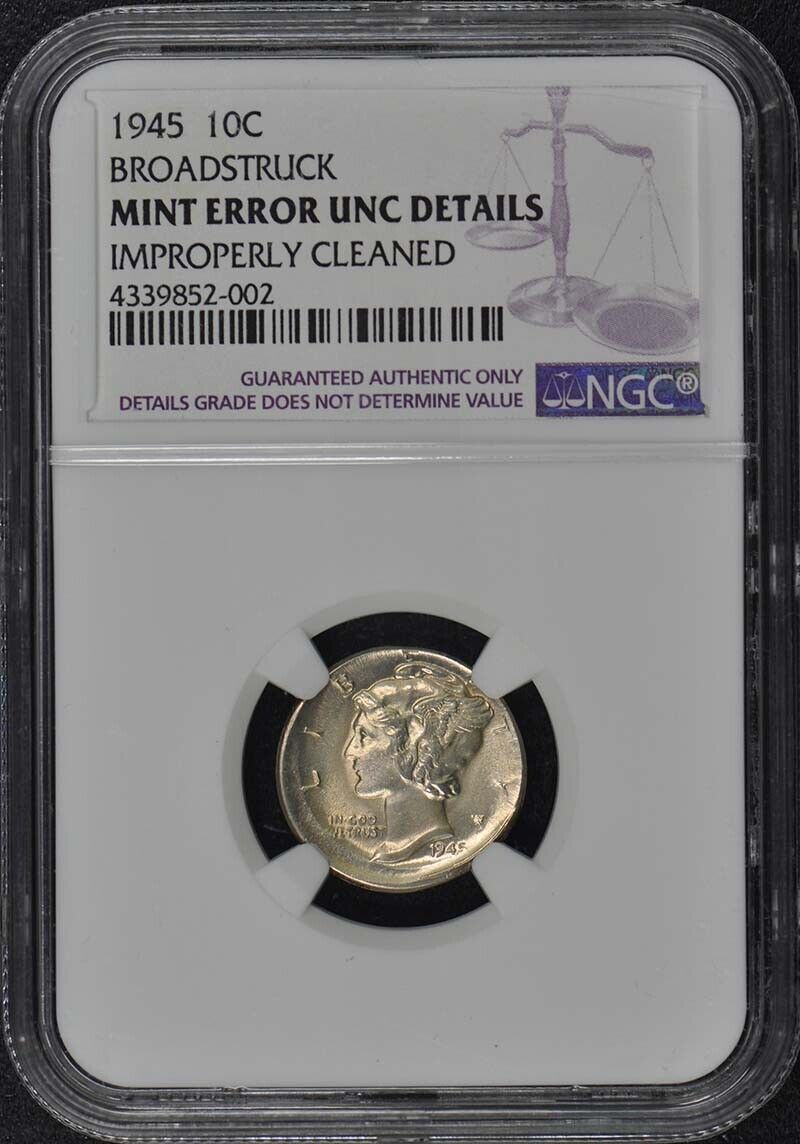
We mentioned collars earlier. They’re made using a three-piece mold, and if it falls off too soon, the missing section makes that part of the coin broader and thinner. The coin might also lose shape and the metal spills out of the frame with each strike. This coin was cleaned, which lowers its value – don’t do that! It’s $65 in MS 60 but $4,500 in MS 65 FB uncleaned.
1945 Mercury Dime Broadstruck Error #2
This coin has the same broadstruck error as the one above. And it’s only graded two steps higher at MS 62 FB. But for one thing, this coin wasn’t cleaned, and for another, the high relief on Mercury Dimes meant most samples didn’t strike well and were only partially rendered. So finding Full Bands is rather rare. That could be why this coin sold for $800.
1945 Mercury Dime D/D Horizontal RPM Error
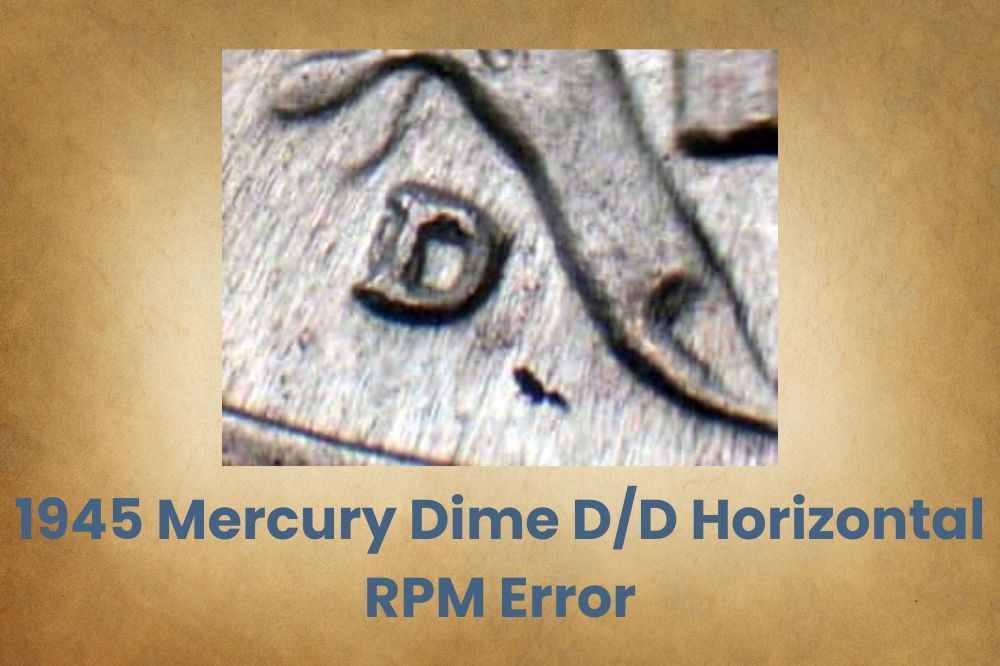
While most of the details on a coin are added by the minting machine, the mint mark was added by hand until 1989. So the puncher’s hand might shift, causing the second or third mint mark to pop onto a slightly different position. This is called a re-punched mint mark or RPM. A D over a horizontal D is worth $450 in MS 60, $575 in MS 63, and $850 in MS 65.
1945 Mercury Dime DDO Error
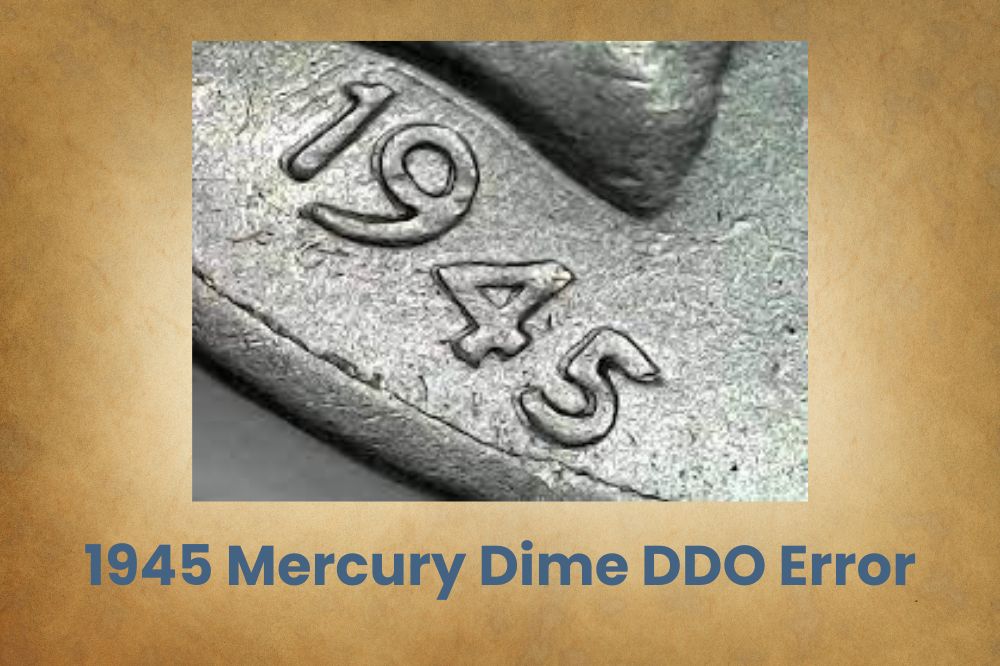
An RPM is a doubling or tripling error on the mint mark while a DDO is a doubling mistake on the die. It means doubled-die obverse, and it happens if the die moves between strikes by the hub. You can spot the doubling most easily on the words or numbers, so carefully check the legends and date. An MS 62 FSB was $1,000 in 2011, but an MS 65 was only $61 in 2019.
1945 Mercury Dime D/D Vertical RPM
Earlier, when we were looking at the D over horizontal D, we mentioned there were some vertical varieties too, so let’s look into one. In this case, the first D is slightly to the southwest of the second one. You can see it peeking to the left and the upper serif is visible if you have a good coin microscope. In MS 64 FB, this coin was auctioned for around $495 in 2013.
1945 Mercury Dime Off-Centre Error
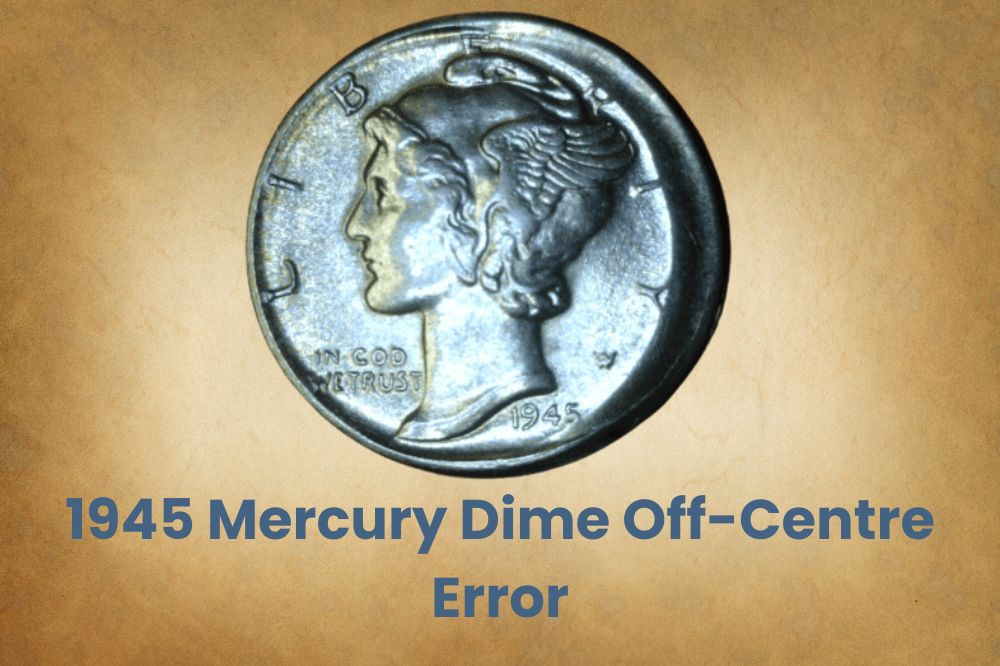
If the planchet shifts its position before the first strike, you’ll end up with an off-center error that leaves part of the coin blank. In such cases, the value depends on the coin grade and the proportion of misalignment. In MS 66 FB, a 50% off-center coin can be worth up to $1,400 while an off-center that’s less than 5% in MS 61 is only worth $285, though that’s still a lot.
1945 Mercury Dime Struck on a Netherlands East Indies Planchet
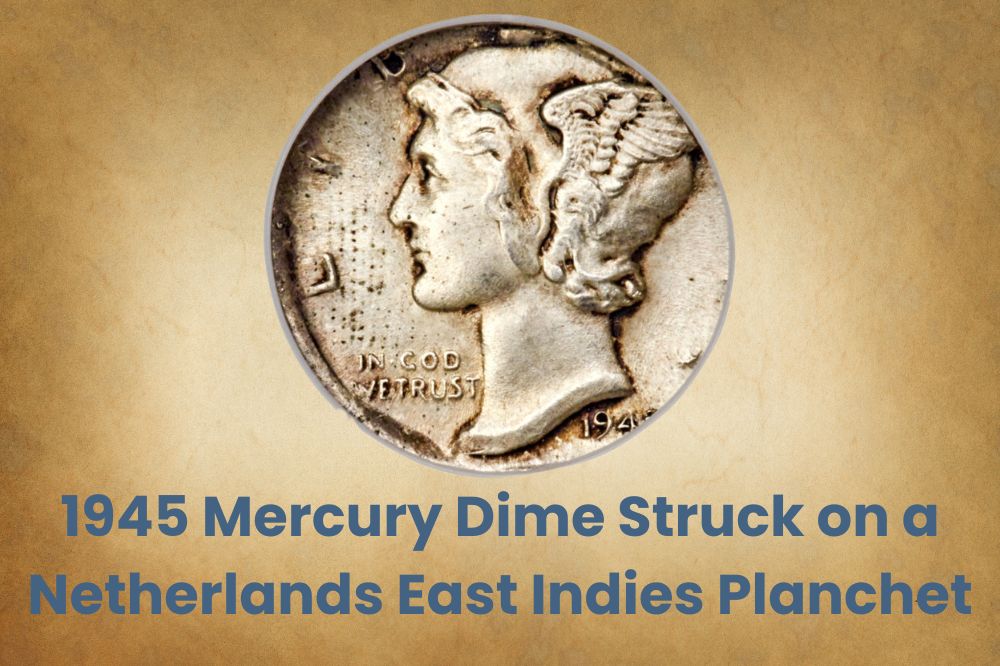
The US Mint sometimes strikes coins for other countries and territories. And these foreign coins might share the metal composition or planchet diameters of local coins, so they occasionally get mixed up. In this case, a Mercury Dime design ended up on a Dutch East Indies planchet, and you can tell because it only weighs 1.28g! In MS 64, it sold for $2,600.
Related Posts: 22 Most Valuable Roosevelt Dimes Worth Money
History of the 1945 Mercury Dime
Let’s start with a bit of debunking. Charles Barber was the Chief Mint Engraver from 1879 to 1917. And his V-Nickels are often ridiculed for not having the word ‘Cents’ on them, which led enterprising criminals to gild them and pretend they were gold half eagles worth $5. But the 1792 Coinage Act said only pennies and half-pennies needed denominations on the back.
Other coins would be identified by their size and features since they often had the same obverse and reverse. So the first circulating di(s)me – the Draped Bust of 1796 – didn’t have its denomination either. Face values only appeared on the Capped Bust Dime of 1809. They were listed on the back as 10c. By the Capped Bust Dime of 1837, that changed to One Dime.
Also, before 1828, coins were minted without collars – the raised rim that forms the solid border and shape. That year, the concept was introduced by Chief Engraver William Kneass. It allowed the mint to make thicker coins in standard sizes. It also made it easier to add reeds to the edges of coins, which stopped people from sneakily shaving the precious metal coins.
This was a common trick used to reduce the coin’s melt value. Since coins were now thicker, the diameter was shrunk to maintain their face value. The weight of American coins is legally standardized too. Quarters always weigh 2.5 times the mass of a dime, and dimes are always 1/5th the weight of a half dollar. This balance is retained even when the metal mix changes.
This is why collectors should always weigh coins. It’s a reliable tip to spot errors and fakes since mass is always consistent when coins exit the mint. Now then, in the 1880s, there was a lot of interest in redesigning the Seated Liberty Dime, but rumor had it that Barber wanted to do the redesigning himself, so he set up a chain of events that eventually facilitated this.
The Barber vs Mercury Dime Debate
First, Barber invited famous sculptors to compete, setting strict requirements. They had to submit models in low relief, not just sketches, plus the legends and denominations. Despite the heavy work involved in producing these contest entries, the mint would only award the winner $500 and wouldn’t pay the other entrants. He then invited 10 top artists to compete.
In response, many of the invited artists opted out of the competition. Next, Barber asked one of the 10 invitees, Augustus Saint-Gaudens, to help judge the 300+ entries submitted by the public. But they disagreed on almost everything and only found two worthy of mention, so Barber made the coins himself. The public hated his coins and wanted replacements by 1892.
Still, the Barber Coinage ran for its full 25 years and in 1916, another contest was launched to replace them. Barber submitted an entry, as did Adolph Weinman, Hermon MacNeil, and Albin Polasek. Adolph Weinman won with his Mercury Dime design. Lots of people think the image is the Roman god Mercury wearing his famous winged helmet, hence the nickname.
But it’s actually Lady Liberty wearing a Phrygian Cap aka Liberty Cap, with wings on it. For reference, Lady Liberty is loosely based on the Roman goddess, Libertas. In books, she often had a Phrygian Cap, which was first worn by emancipated slaves in Ancient Rome, and was used as a symbol of freedom around the world. To Weinman, it showed liberty of thought.
The coin is formally known as the Winged Liberty Head Dime, though it’s unclear why he added wings. Rumour has it his teacher, that same Augustus Saint-Gaudens, had a thing for feathers. His delight passed down to his students, who used them every chance they got! The model for Lady Liberty is Elsie Kachel Stevens, the famous socialite wife of Wallace Stevens.
Weinman never admitted it publicly, but the couple were his tenants, and family records later confirmed her identity. The Mercury Dime is often described as one of America’s prettiest and most popular coins. And unlike the prior dimes, its design wasn’t changed at the 25-year mark. It stayed on until FDR died and they had to honor him on a dime in 1946.
Related Posts: 18 Most Valuable Mercury Dimes Worth Money
How to Identify the 1945 Mercury Dime?
1945 was the last year of the Mercury Dime, and as we review its features, let’s start with the terms. A coin blank is called a planchet. The heads side is called the obverse and the tails side is called the reverse. The images are called devices and the words are called legends or mottos. The background of the coin is called the field. Let’s discuss this coin’s characteristics.
The Obverse of the 1945 Mercury Dime
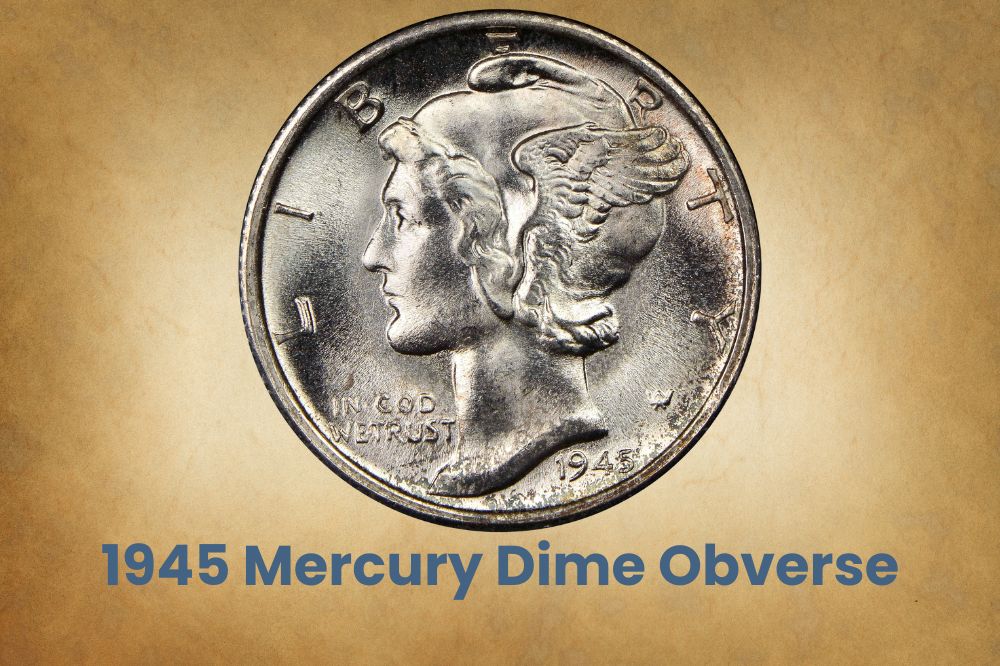
The obverse (heads side) of the 1945 Mercury Dime has a young Lady Liberty wearing a winged Phrygian Cap. The legend Liberty runs along the upper rim, partially hidden by her cap. In God We Trust is on the lower left, in front of her neck. The mint date is below her neckline cut-off, and the designer’s initials, AW, are on the lower right side of the coin.
The Reverse of the 1945 Mercury Dime
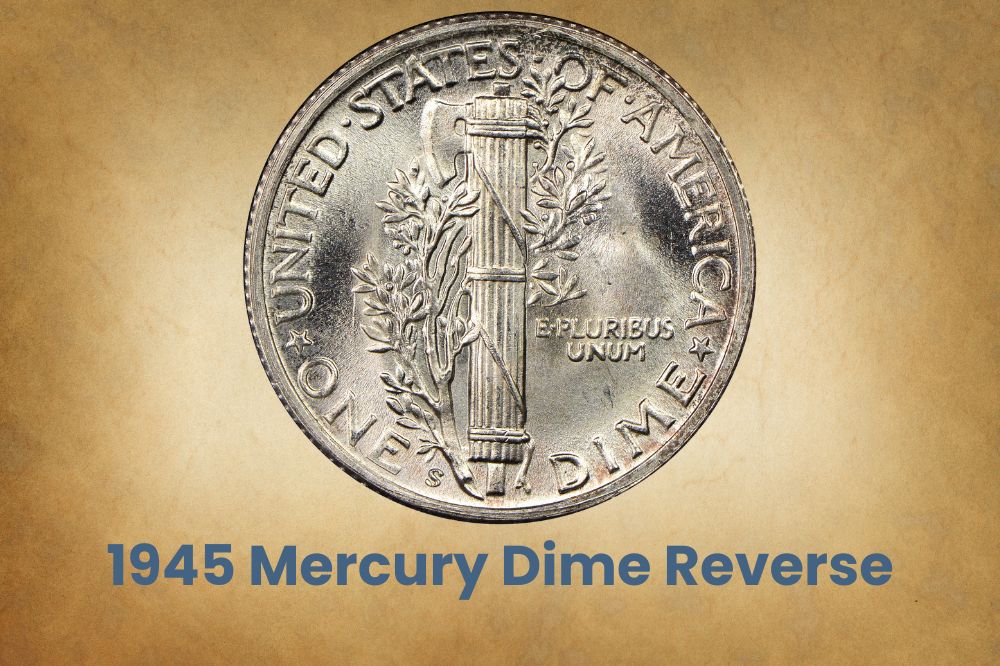
The reverse (tails side) of the 1945 Mercury Dime features a fasces – a bundle of tied sticks and a battle axe. An olive branch coils around the fasces. This combination represents war, peace, and the nation’s ability at both. Mussolini’s fascists later adopted this symbol, but its image stayed untainted within the US. The top of the coin reads United States of America.
The words are separated by dots, and the bottom of the coin reads One Dime, with a star on either side. The base of the fasces separates the One from the Dime in the denomination, and the mint mark is after the E in One. On the right of the fasces, next to the star, is the motto E Pluribus Unum. This coin was such a hit that it continued to circulate for the next 3 decades.
Other Features of the 1945 Mercury Dime
The 1945 Mercury Dime was 90% silver and 10% copper. It measured 17.91mm in diameter was 1.35mm thick and had a mass of 2.5g. The edge of this gorgeous 10c coin has 119 reeds. While the public loved this coin, the mint did not. Officials felt this dime, just like the Lincoln Cent, Buffalo Nickel, and Saint Eagle, were ‘… meant to satisfy artists, not practical coiners’.
Related Posts: 17 Most Valuable Dimes Worth Money
How Much is a 1945-D Mercury Dime Worth?
Ordinarily, a 1945-D Mercury Dime is only worth its melt value, which is about $1.73 in December 2022. In high mint states, the price of this dime can go up to about $4.50. But if you get a good error dime, such as the D over horizontal D, the price gets closer to $1,000.
Are 1945 Dimes Rare?
Not at all. These coins are easy to find, both in circulation and in cigar box collections. That said, they were designed with deep detail and high relief, so their lines weren’t clear-cut or sharp, even on their first day out of the mint. The reverse was especially prone to wearing down, so 1945 Mercury Dimes (or any year Mercury Dimes) in FB or FSB grades are rare.
